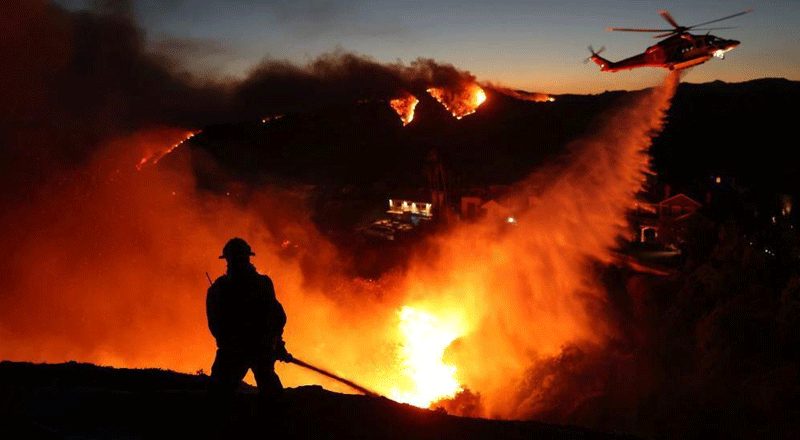A Region Under Fire
Wildfires have long been a recurring threat to California, with previous blazes causing significant damage and loss of life. In recent years, fires have intensified due to prolonged droughts, strong winds, and climate change. The latest catastrophe, the Hughes Fire, has rapidly expanded near Los Angeles, forcing tens of thousands to evacuate as firefighters struggle against extreme conditions.
Hughes Fire: Rapid Spread and Widespread Evacuations
On Wednesday, a new wildfire erupted north of Los Angeles, quickly engulfing over 9,400 acres (38 square km) in the Castaic Lake area. Mandatory evacuation orders were issued for more than 31,000 residents as the flames, driven by strong winds and dry brush, spread uncontrollably. Officials warned of an “immediate threat to life,” with much of Southern California under a red-flag warning for extreme fire risk.
Matthew Van Hagen, a spokesperson for the firefighters, noted that while the affected area is less densely populated than previous fires, the combination of high winds, dry conditions, and steep terrain has made containment efforts extremely difficult.
The Ongoing Battle Against Wildfires
The Hughes Fire is only the latest in a series of devastating blazes in the Los Angeles area. Firefighters had already been battling two major wildfires—the Eaton Fire and the Palisades Fire—both of which have burned tens of thousands of acres.
The Eaton Fire, east of Los Angeles, has burned 14,021 acres (57 square km) and is now 91% contained.
The Palisades Fire, on the city’s western side, has scorched 23,448 acres (95 square km) and is 68% contained.
At the height of these fires, nearly 180,000 people were under evacuation orders, with significant damage to homes and infrastructure. Since their outbreak on January 7, the fires have claimed 28 lives and destroyed or damaged nearly 16,000 structures.
Firefighting Efforts and Challenges
More than 4,000 firefighters are currently deployed to battle the Hughes Fire, with an additional 1,100 firefighters stationed across Southern California in anticipation of new outbreaks. Aircraft have been used to drop water and fire retardant, while ground crews work tirelessly to contain the blazes.
Interstate 5, a major transportation route, was temporarily closed due to heavy smoke, exacerbating logistical challenges. Meanwhile, the Angeles National Forest, covering 700,000 acres (2,800 square km), has been closed to visitors to prevent further disasters.
A History of Wildfire Devastation
California has experienced numerous deadly wildfires in the past, with the 2018 Camp Fire being the deadliest, claiming 85 lives and destroying nearly 19,000 structures. In recent years, damages from wildfires have skyrocketed, with AccuWeather estimating losses from the latest fires exceeding $250 billion.
Prevention and Recovery
With Southern California enduring nine months without significant rainfall, firefighters are hoping for some relief as rain is forecasted from Saturday through Monday. However, long-term solutions are necessary, including improved forest management, stricter fire safety regulations, and investment in firefighting technology.
As California continues to battle wildfires, the Hughes Fire serves as another stark reminder of the state’s vulnerability to natural disasters and the urgent need for sustainable fire prevention measures.
(With inputs from agencies)





